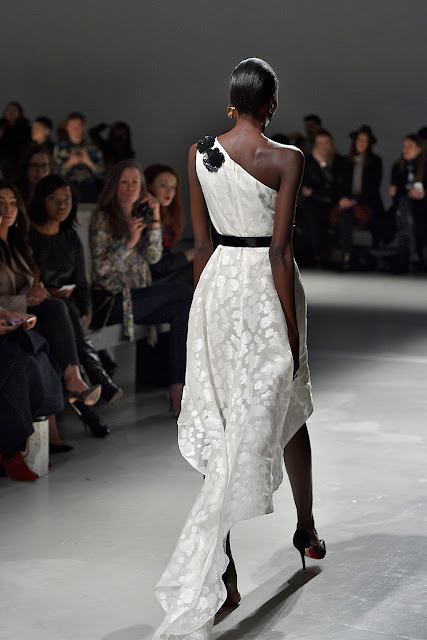Daido Moriyama has been walking for more than 40 years. Each
day the acclaimed Japanese photographer hits the streets of Tokyo, or another
city, noticing something new, something unusual, which he captures with his
camera.
 |
| Images by Daido Moriyama at the exhibition. |
“It doesn’t tire me,” he said at the opening of an exhibition
of his work in Paris. “A city is something that never stops, and my view
constantly changes.”
The show, titled Daido Tokyo, runs at the Fondation Cartier
for Contemporary Art until June 5 and focuses on Moriyama’s recent work,
portraying the "disjunctive nature of the urban experience".
It features an extensive selection of colour photographs and also sheds light “on this lesser-known yet ubiquitous aspect" of
Moriyama's photographic practice over the last two decades, say the curators (Hervé Chandès and Alexis Fabry).
But Moriyama's iconic black-and-white work is equally represented by a project that the Fondation Cartier commissioned specifically
for the exhibition: a multi-screen projection of 291 black-and-white
photographs called Dog and Mesh Tights, set to music by fellow artist Toshihiro
Oshima.
 |
| Daido Moriyama (photo: McKenzie) |
The slide show is aimed at “plunging viewers into the
commotion of the contemporary City, capturing fragments of daily life from its
unrelenting urban hustle and bustle,” the Fondation Cartier says.
It comprises
images from each of the cities Moriyama traversed from July 2014 to March 2015:
Tokyo, Hong Kong, Taipei, Arles, Houston and Los Angeles. People and objects in
these urban settings evoke both intimacy and distance, suggesting a kind of
isolation amidst the concrete and commotion.
Moriyama himself said that the slide show is like a “reset”
in his career and that 85 percent of the photographs were taken in Tokyo.
 |
| A visitor views the photographs. |
“When I finish walking in one direction, I turn back and go
in the other direction,” he said through a translator. “Walking is my work and
ultimately my life.
“I don’t hesitate when I come across something,” he added. “I
don’t think of anything at the moment, and yet all my thoughts are focused on
this one thing.”
Moriyma said that black-and-white is a “natural choice” for
him, although he doesn’t see much difference in the techniques. But
black-and-white photography has a certain “eroticism”, he said.
The colour pictures shown in the exhibition were mainly taken in
Shinjuku, one of the most frenetic districts of Tokyo, and they conjure up
different aspects of the busy, mysterious and “eternal shantytown”, as Moriyama
calls it.
 |
| Moriyama takes a break (photo: McKenzie) |
Writing in the catalogue to the exhibition, he says that his
relationship with the area goes back almost forty years that that he still finds
it “enigmatic”, something that obsesses him.
“I may position myself there as an observer, but every time I
do so, Shinjuku hides its true nature like a chimera and throws my mental
perspective into confusion, as if I had strayed into a labyrinth,” he says. “I
certainly don’t hate the place – yet if asked if I truly love it, I sense I’d
fall silent.”
For many critics, Moriyama’s work expresses the “conflicting
realities of a society caught between tradition and modernity”, as the curators
state. The photographer, like many others of his generation, has witnessed the
sweeping changes that took place in post-World War II Japan, and he has sought
to “invent a new visual language” to express this.
 |
| A reflection of urban landscapes at the show. |
Born in 1938, Moriyama grew up in Osaka and studied graphic
design there. He moved to Tokyo in 1961, following his studies and the decision
to take up photography as a career.
He was influenced by various avant-garde
photographers, and incorporated action elements into his work – walking through
the streets of the city, using a small hand-held camera.
His early work was mainly in black and white, but in the
1970s he began experimenting with colour photography, and this interest grew
with the development of digital cameras, according to the curators. Yet, many of the photographs that he
shot in colour he converted to black and white, because of aesthetics.
“The black-and-white tells about my inner worlds, my emotions
and deep feelings … every day walking
the streets of Tokyo or other cities, as a vagabond aimlessly,” he says. “The
colour describes what I meet without any filters, and I like to record the
instant for the way it looks to me.”
 |
| Leanne Sacramone, a curator (photo: McKenzie). |
Some viewers may find that not much happens in Moriyama’s
photographs – a single shoe lying in a gutter, a young man passing neon-lit
billboards, a view of peeling, crumbling facades, a flower discarded on the
sidewalk.
The images pull the gaze back, however, for a second and
third look, while the airy space of the Fondation Cartier – with its tall
windows and views of the street outside – adds to the resolutely urban atmosphere.
Leanne Sacramone, a curator at the Fondation, said
that one of the most interesting things about Moriyama’s work is his portrayal
of things that usually go unnoticed.
“You can find beauty in things that go unremarked,” she said.
“And for him that’s important, because as he says, ‘in the blink of an eye, the
world changes’. That’s what will strike most viewers – the fleeting pace of urban experiences.” – Tasshon.





































